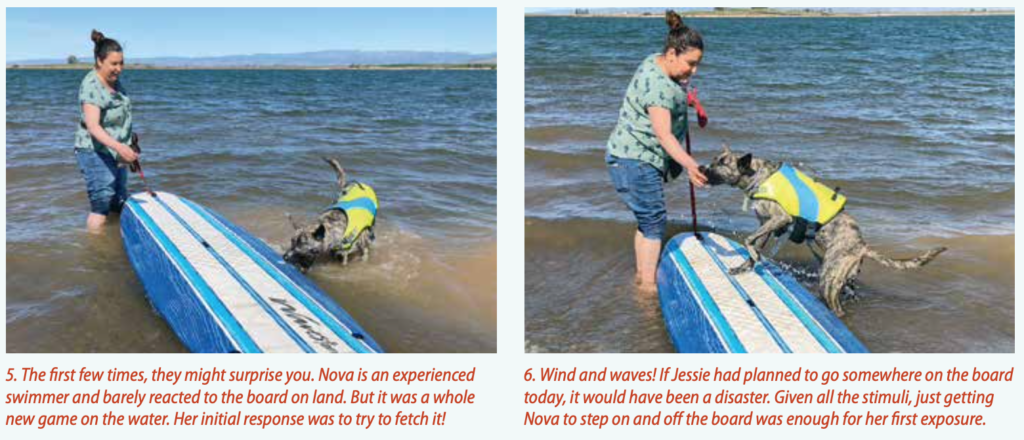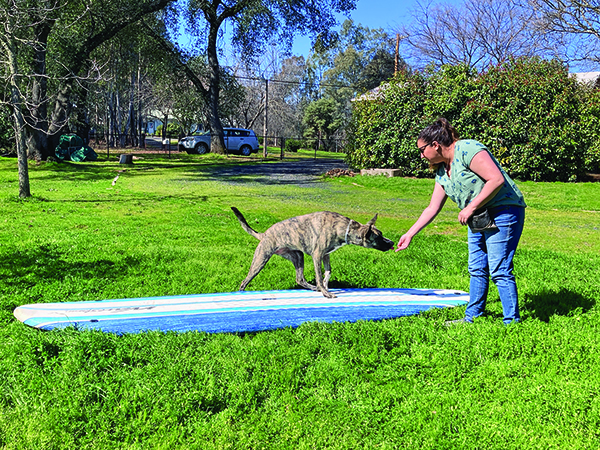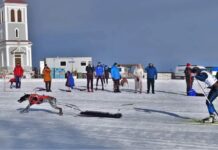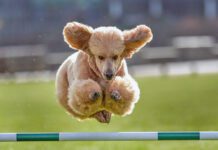Preparation makes all the difference in the world when it comes to water-based activities with your dog. Practicing the skills that your dog will need on board your vessel (whether it’s a canoe, kayak, or paddleboard) on dry land can help ensure that your dog will enjoy the experience and comply with your instructions while on the water.
PHASE ONE: ENSURE A POSITIVE EMOTIONAL RESPONSE TO THE EQUIPMENT
Introduce the paddle craft and related equipment in a low-distraction environment where your dog is very comfortable, such as your living room or backyard.
Merely setting up the paddle craft can make loud noises or knock over objects, so do this when your dog is not nearby to avoid creating a negative emotional response to the paddle craft. Place it on the floor or ground in such a way that it won’t wobble and then let your dog investigate it at his own pace. If your dog is cautious about approaching it, you may want to leave it out for a few days to let your dog habituate to it.
Avoid coaxing or luring a cautious dog near or onto the craft because this might cause the dog to be much closer to the scary thing than he wants to be. It can be helpful to place bits of low-value food around and near the equipment and then let your dog independently choose to approach on his own time.
When your dog consistently approaches the paddle craft in a relaxed, happy manner, you can start to train her to step onto it. Lure the behavior with a piece of food or free-shape it using a clicker or marker word. Remember to be generous with reinforcements at the early stages of teaching a new skill, and split the behavior into small steps that the dog finds very easy to do, for example, moving toward the craft, touching it, two paws on it, then fully onto the craft.
It can be helpful to provide your dog mini breaks every minute or two. A short break allows the nervous system to relax a bit and serves as a test to see if your dog wants to continue to train. Your dog might stop and scratch, disengage briefly to sniff around the room, or exhibit other displacement behaviors. If he does this, it could be an indication that it’s time to modify or end that training session. Resume the session only if your dog wants to continue and is under threshold.
Once your dog happily approaches and steps onto the craft without coaxing or luring, it’s time to try moving the craft slightly. Begin when your dog is off the craft and a distance away, to avoid startling her. Eventually you’ll let her be on the craft while you make it move slightly.
When conditioning a positive emotional response to the craft, it’s important to give your dog the choice to leave the craft at any time. If your dog doesn’t want to stay on or in it, make things easier for her and spend more time on each small step. It might mean that your training sessions have been too long, so be sure to end the practice before your dog begins to lose interest.
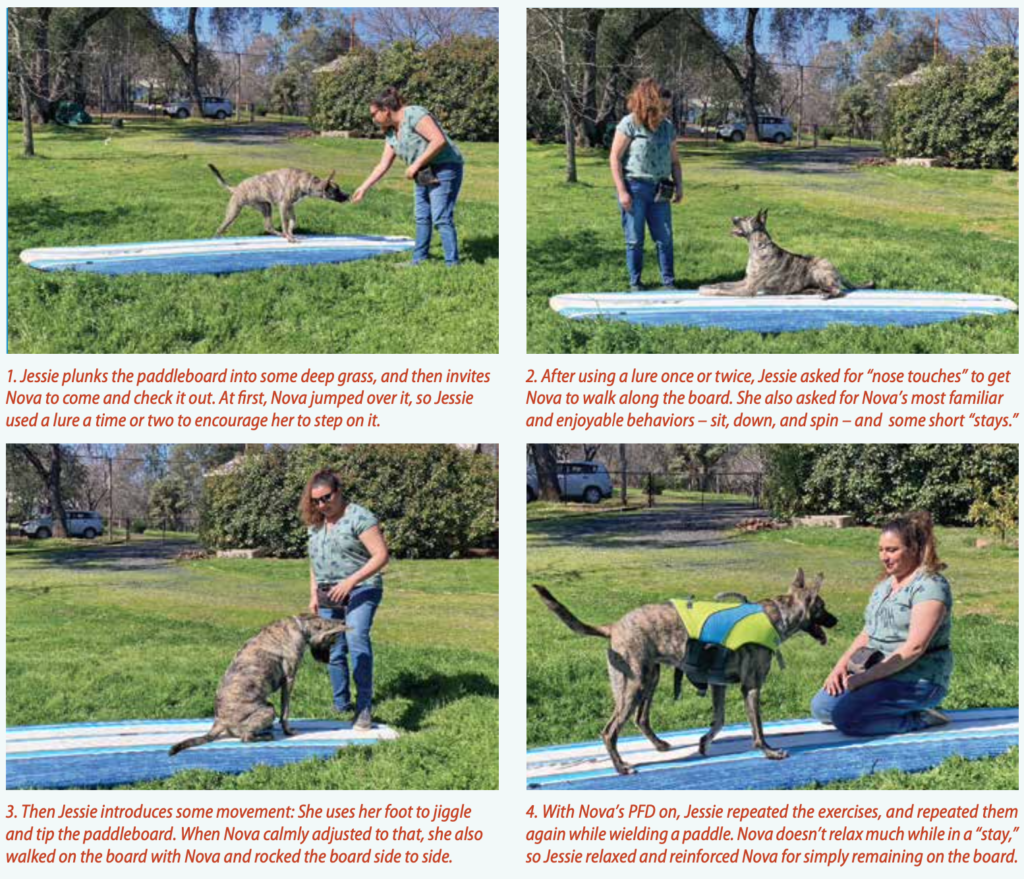
PHASE TWO: PRACTICE RELAXATION ON THE CRAFT
If your dog seems more amped up each subsequent training session, adapt the sessions to be less intense. For example, you may want to use lower-value treats, modify your voice and body to convey calm, and incorporate earlier or more frequent breaks.
It can also help if you pair the equipment with something the dog already feels relaxed about, such as massage or resting beside you while you read or watch a movie.
PHASE THREE: TEACH GOOD MANNERS AROUND THE CRAFT
When out on the water, your dog needs to be able to respond well to your verbal instructions, especially Come, Sit/Down (in a preferred place), Stay, Leave It, and On/Off the craft. Training these skills a few feet away from the paddle craft before attempting them while on or in the craft can make the training easier.
It’s imperative to avoid using coercion, corrections, or force while training, because this can create negative associations that could contribute to a fear or dislike of the paddling experience (and the subsequent behavior problems that come along with those negative emotions).
PHASE FOUR: ADD DISTRACTIONS AND BUILD DURATION
Make sure your dog understands and will still respond to the “sit” cue while wearing a life vest – and while sitting on or in a paddle craft while you are holding a paddle.
The remaining steps for dryland training involve gradually adding distractions and duration to simulate what the dog will experience on the water. Each of these elements should be practiced separately before combining them:
• You in or on the craft in various positions
• You holding a paddle and mimicking paddling
• You moving the paddle craft slightly, then with greater intensity
• Toys placed nearby and then rolled past the craft
• Increased duration of skills and distractions
After mastering the dryland training at home, take your craft to a park and later to the shoreline. Keep in mind that when you change the environment, your dog might need to start some of the skills back at a beginning level.
